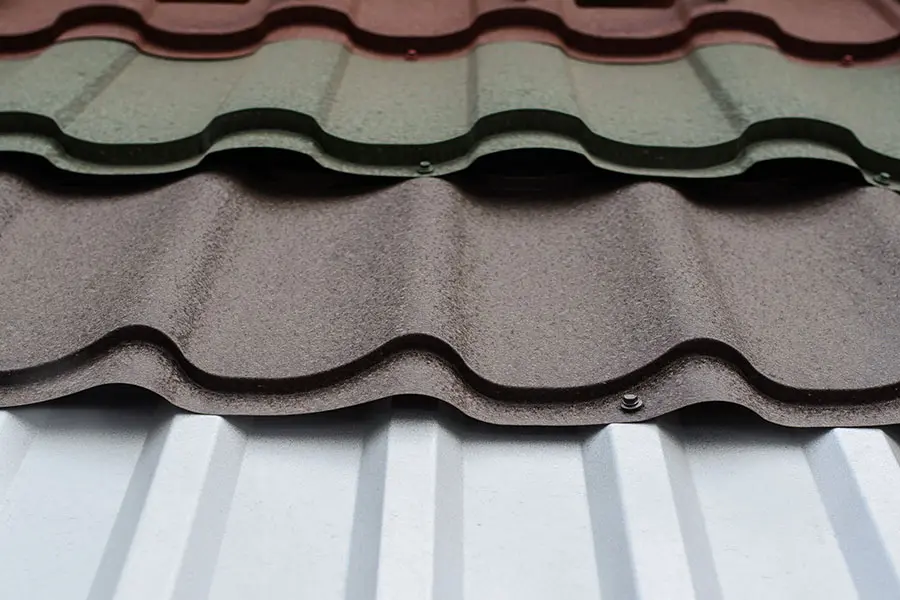Neighborhood Insights on Roofing Companies Gainesville Florida Homeowners Prefer
Neighborhood Insights on Roofing Companies Gainesville Florida Homeowners Prefer
Blog Article
Best Practices for Ensuring Appropriate Roof Covering Air Flow
Making certain correct roof covering ventilation is vital for the long life and effectiveness of a roof. A balanced consumption and exhaust vent ratio, typically 1:300, plays an essential role, with consumption vents ideally placed at the lower edge of the roof for cool air access and exhaust vents at the height for warm air leave. Routine examinations to identify clogs and maintain clear air flow are extremely important. Keeping insulation away from vents is vital to stop air flow constraint. Comprehending these foundational elements establishes the stage for even more in-depth understandings into installation and upkeep practices that can dramatically improve your roof's performance.
Understand Ventilation Fundamentals
Effectively recognizing air flow essentials is important for making sure the durability and performance of roof systems. Efficient air flow alleviates wetness accumulation and temperature level extremes in the attic, both of which can bring about considerable architectural damages in time. A well-ventilated roof covering aids in avoiding usual problems such as mold development, wood rot, and ice dams, which can endanger the honesty of the roof covering products and the underlying structures.
The key goal of ventilation is to facilitate the movement of air, enabling for a constant exchange in between the indoor and outside atmospheres. This balance is attained via a mix of intake and exhaust vents that interact to preserve optimal air movement. Consumption vents, commonly situated along the soffits or eaves, permit fresh air to enter the attic space, while exhaust vents, usually located at or near the roofing ridge, make it possible for hot, moist air to get away.
Secret elements affecting the performance of roof covering air flow include proper positioning, sufficient sizing, and guaranteeing that both consumption and exhaust vents are unblocked. Normal examination and maintenance are critical to determine possible blockages, damages, or inefficiencies in the air flow system, thus safeguarding the roofing system's efficiency and durability.
Types of Roof Covering Vents
Roof vents play an important role in keeping reliable attic room ventilation and, by extension, the general health and wellness of the roofing system. Numerous kinds of roof covering vents are offered, each with distinct advantages tailored to specific roof covering demands.

Soffit vents are installed under the eaves and job in tandem with roof vents to guarantee a balanced intake and exhaust system. By allowing cooler air to get in from below, soffit vents assist in the expulsion of warm air through top vents. Gable vents, located on the exterior wall surfaces of the attic room, deal an additional effective solution, particularly in homes with gable roofing systems.
Examine Your Current Ventilation

Next, think about the age and condition of your roof products and ventilation components. Older systems may not comply with existing building regulations or might have degraded in time, reducing their effectiveness. Conduct a complete assessment to determine any type of indicators of deterioration, such as corrosion, damages, or spaces that could compromise the system's performance.
In addition, gauge the attic room temperature and humidity levels. High temperature levels and moisture can indicate insufficient air flow - roofing companies in gainesville florida. Make use of a hygrometer and thermostat to acquire accurate readings, contrasting them with exterior problems. Persistent disparities suggest potential issues that need addressing.
Installation Best Practices
Efficient installation of roof covering ventilation systems is critical for ensuring ideal efficiency and durability. Proper installment starts with recognizing the particular air flow demands of the roof covering and the structure it covers. This includes determining the proper ratio of intake to exhaust vents, usually sticking to the 1:300 policy, which stipulates one square foot of air flow for every 300 square feet of attic floor area.

Intake vents must be mounted at the roofing system's reduced edge, often in the soffits, to permit great air to enter. Exhaust vents, on the various other hand, must be mounted near or at the roofing's optimal to promote the exit of warm, wet air.
Seal all air vent connections carefully to stop air leaks and possible water infiltration. Use high-quality products and follow maker standards to guarantee sturdiness and performance. Additionally, incorporating ridge vents with baffles can substantially improve airflow effectiveness by protecting against wind-driven rainfall and snow from entering the attic.
Inevitably, precise installation of roof covering air flow systems minimizes potential issues such as mold growth, ice dams, and structural damage, guaranteeing the roof's stability and the building's general wellness.
Normal Maintenance Tips
Consistency in upkeep practices is essential to guaranteeing the long-term performance of roof covering air flow systems. Throughout these examinations, make sure that vents are free of particles, nests, and other blockages that might hamper air movement.
Cleaning the vents is an additional crucial task. Make use of a soft brush or a vacuum cleaner to get rid of dirt and particles from consumption and exhaust vents. Beware not to damage the air vent displays or louvers throughout the procedure. In addition, check the attic room room for any type of signs of water damages, which might endanger the honesty of the roof.
Correct insulation is just as important. Ensure that attic insulation does not obstruct the vents, as this can drastically restrict air flow. Reposition or change it to maintain an effective obstacle. if any kind of insulation has moved or resolved.
Last but not least, change any kind of harmed or missing parts immediately. Damaged vents, cracked tiles, or scrubby blinking can all contribute to insufficient air flow and needs to be attended to without delay. Normal maintenance guarantees that the roof ventilation system functions optimally, consequently expanding the life expectancy of the roofing itself.
Conclusion
Ensuring correct roofing ventilation is critical for preserving the effectiveness and resilience of a roof covering system. Adherence to the 1:300 consumption and exhaust air vent ratio, combined with the critical positioning of vents, is crucial.
A well balanced intake and exhaust vent ratio, commonly 1:300, plays an essential function, with consumption vents preferably positioned at the reduced side of the roof covering for trendy air entry and exhaust vents at the peak for warm air exit. Consumption vents, typically located along the eaves or soffits, permit fresh air to go into the attic room room, while exhaust vents, frequently located at or near the roofing system ridge, make it possible browse around these guys for hot, moist Read Full Article air to leave.
Soffit vents are installed under the eaves and job in tandem with roofing system vents to ensure a well balanced consumption and exhaust system. By permitting cooler air to go into from below, soffit vents facilitate the expulsion of warm air via top vents. Adherence to the 1:300 consumption and exhaust air vent ratio, combined with the critical positioning of vents, is vital.
Report this page